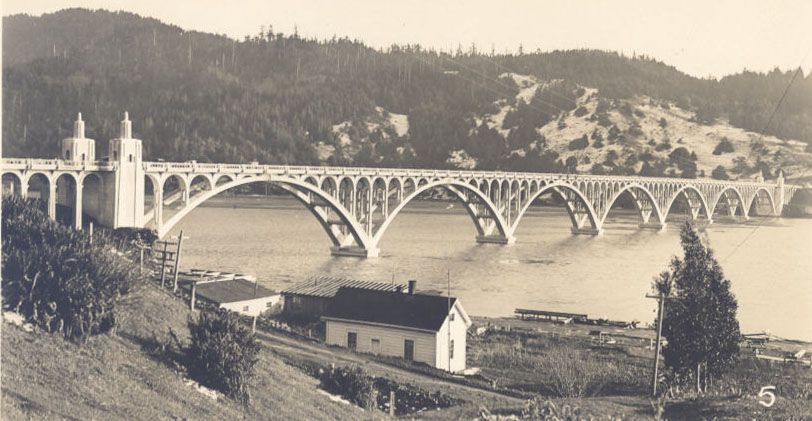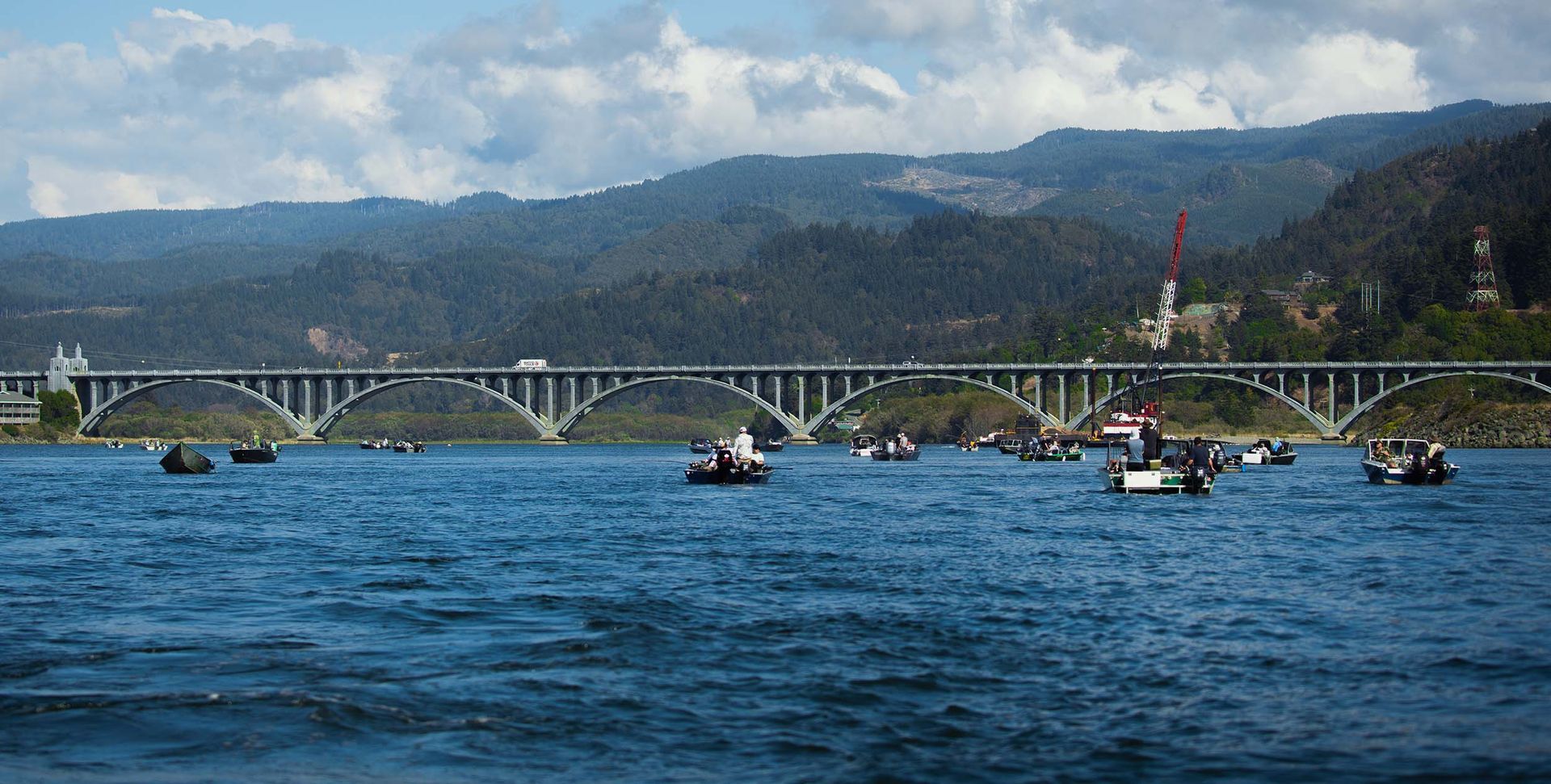History of Gold Beach, OR
Uncover Gold Beach's History
Gold Beach, nestled along Oregon’s southern coast just south of the
Rogue River and forty miles north of the California border, is steeped in a colorful history.
The city's name dates back to a gold discovery in 1852 near the mouth of the Rogue River. Originally known as Ellensburg, the town was renamed in 1853 after Sarah Ellen Tichenor, daughter of Captain William Tichenor of Port Orford. It gained further prominence in 1858 as the county seat, a role it adopted after Port Orford failed to secure funding for a courthouse.
Before its transformation during the Gold Rush, Gold Beach was the homeland of the Tolowa and Chetco tribes, who flourished thanks to the region’s rich natural resources. Post-Gold Rush, the town transitioned into a bustling fishing and logging community.
Today, Gold Beach attracts those who appreciate its breathtaking landscapes, abundant outdoor activities, and welcoming community. This charming coastal city continues to offer a perfect blend of adventure and relaxation, making it a cherished destination for visitors and residents looking to immerse themselves in its historic and scenic allure.
Gold Beach Heritage
History and Heritage of Gold Beach
Gold Beach, was once the homeland of the Athapaskan-speaking Tututni people. Rooted along the Lower Rogue River, the Tututni community thrived through salmon fishing, berry gathering, and cultivating tobacco on the land they cleared themselves. They built durable plankhouses and navigated the ocean with canoes crafted from local western red cedar. Today, their legacy continues through the descendants in the Confederated Tribes of the Siletz Indians.
The mid-19th century brought tension and turmoil during the Rogue River Wars of 1855-1856. Conflict arose as Gold Beach's settlers clashed with the Tututni, who resisted relocation from their ancestral lands. In a desperate bid for safety during the escalating violence in February 1856, settlers and local miners built makeshift forts along the coast. The most notable standoff occurred at Miner’s Fort, where they held their ground until aid from Fort Orford reinforced them. The conflict tragically culminated in casualties on both sides and the forced relocation of most local Native populations to the Siletz and Grand Ronde Reservations, marking a profound shift in the area's history.
Historical Landmarks
Rogue River Bridge on Oregon's Coast Highway
You can find the Rogue River Bridge at milepost 327.64 on the Oregon Coast Highway (U.S. 101), spanning the mouth of the Rogue River between Gold Beach and Wedderburn. Named after Governor Isaac Lee Patterson, who played a pivotal role in its construction, this bridge was completed in 1932 by renowned state bridge engineer Conde B. McCullough. It's part of a larger initiative from the 1920s and '30s to replace ferry services with permanent structures, enhancing connectivity across three bays and three river estuaries.
The design of the Rogue River Bridge, featuring a challenging series of seven 230-foot ribbed concrete arches, was a response to the tough tidal conditions that made ferry crossings near Gold Beach problematic. This bridge, extending 1,898 feet with a road width of 27 feet, was not just a feat of engineering. It was designed to boost tourism, drawing visitors from California to explore Oregon’s alluring south coast.
McCullough employed an innovative pre-stressing method, developed by French engineer Eugène Freyssinet in the early twentieth century, on the Rogue River Bridge.
In a joint effort with the U.S. Bureau of Public Roads, this innovative construction method employed temporary jacks to strategically stress arch ribs during the concrete setting. Spearheaded by McCullough, this technique reduced the need for concrete and steel, cutting costs and allowing the creation of slender, classically inspired arch ribs. These ribs, featuring scored concrete mimicking cut-stone, enhanced the bridges’ aesthetic appeal.
McCullough also incorporated Art Deco elements into his designs, notably in the Rogue River Bridge with its twin-battered spandrel columns that blend robust Tuscan styles with distinctive Art Deco scoring and banding, enriching the structure's visual and historical value.







